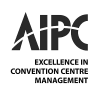REPUBLIC OF THE PHILIPPINES
All content is in the public domain unless otherwise stated.
By Atty. Armando L. Suratos
Manila Bulletin, December 15, 2018
In 2002, I attended the International Congress and Convention Association (ICCA) Congress in Copenhagen, Denmark. ICCA is the global organization for the meetings industry. I was then the Deputy Governor for the Resource Management Sector of the Bangko Sentral ng Pilipinas (BSP) as well as the concurrent Vice Chairperson of the Board of Directors of the Philippine International Convention Center (PICC). Co-delegates asked me how come a central banker was attending the event, and I had to explain that the BSP owned the country’s premier convention center. At that time, the BSP was the only central bank that owned a convention center. Now, the central bank of Tanzania also owns the Bank of Tanzania convention center.
As owner of PICC, the BSP is responsible for steering the organization towards a profitable and sustainable future, funding the Center’s strategic upgrade and renovation programs to keep it up to par with global standards. With the BSP’s support, the Center has remained to be one of the top-of-mind venue choices for international conventions, conferences and meetings and events for over four decades.
The Philippines’ “Convention Showpiece”
PICC was purposely built for the International Monetary Fund-World Bank annual meeting in September 1976. After Japan, it was the first time that the meeting was held in an Asian country. Touted to be the country’s “convention showpiece”, the venue specifications for an event of such magnitude were the basis of its design and construction: halls that can accommodate thousands of delegates, meeting rooms for breakout sessions, secretariat offices, and ancillary facilities such as registration and document distribution counters, a media center, a prayer room, and lounges.
The historic convention center has since stood the test of time, hosting the biggest and most significant international and local events and the world’s best and brightest in business, science, government, the academe and the arts. Its iconic architecture, the mesmerizing chandeliers with 3,068 droplights at the main lobby, its notable art pieces and rich heritage provide delegates and event attendees with a glimpse into Filipino culture and history. At the front lawn are sculptures donated by countries which participated in an international conference.
The 70,000 square meter convention center has more than 40 halls and meeting rooms that can accommodate as many as 10,000 delegates all at once. The configuration of halls and venues can hold a variety of events simultaneously. (I was recently at the Center to watch the concert of Lea Salonga at the Plenary Hall, and there was a gala night at the adjoining Reception Hall, a regional conference with foreign delegates at the Secretariat Building, a product launch and a seminar at two of the meeting rooms, and a warehouse sale at the Forum, all in one day. It just goes to show how versatile and spacious the PICC is.)
The Center, known as a favored graduation venue, continuously improves its facilities, amenities and services, including its banquet services, audio visual equipment, security equipment, and IT support to meet the evolving demands of event planners.
Its caterer, Via Mare, uses a state of the art central kitchen, halal kitchen, cold kitchen, bakeshop, walk-in freezer, chiller, blast freezer, flatware, linen and appropriate banquet preparation equipment that can cater to thousands of guests within the premises. The acclaimed food service provider is known for its exceptional cuisine and service to clients.
PICC also carries an inventory of high quality conference tables, chairs and lounge furniture, and makes available modern audio-visual equipment. It has a state-of-the-art security system with more than 200 CCTV cameras scattered around the complex. Free WiFi is available throughout the Center.
Its proximity to the airport, hotels, tourist spots, shopping malls and amusement centers is an added convenience for delegates. Parking slots within the center and its immediate vicinity are available. Furthermore, the CCP Complex where the PICC is located may be locked down to comply with stringent security measures, making it an ideal venue for events such as the APEC Meetings and ASEAN Summits.
Professionally managed and operated
But what gives the PICC its distinct character is its trademark for providing “professional service with a smile.” The Center, with Atty. Renato Padilla as the General Manager, is operated by a staff of 112, dedicated to providing prompt and efficient service to its clients from the event planning process to the actual event implementation. Padilla says, “We’re proud in the sense that we have quality maintenance and operations. And that keeps us ahead of the competition.”
BSP Governor and PICC Chairman of the Board Nestor A. Espenilla, Jr. attests to the professionalism of the PICC management and staff. He said that “it is a conscious effort that we make sure it is run very professionally. We have a very strong team and they know the business.” He added that this core competence of the PICC has been key to the success of many high-profile events. “When people outside see that the Philippines can mount top-notch events, it will create a very positive perception of the country. That messaging, that imagery is very important. The fact that they had a pleasant experience and we were able to stage the event professionally, how organized we are. These are important symbols and PICC today stands as the most important symbol of the convention-capability of the Philippines.”
In addition to the BSP Governor as Chairman, the PICC Board of Directors is composed of BSP Deputy Governor Maria Almasara Cyd Tuaño-Amador as Vice Chairperson and Atty. Padilla and four representatives from the private sector as members.
World-class MICE venue
International events held at the PICC project the Philippines as a tourist destination. The Center is part of the Meetings, Incentives, Conventions and Exhibitions (MICE) sector under the Department of Tourism. This sector is seen as one of the key drivers of tourism revenues.
Each regional or international event creates a multiplier effect on the revenue and employment of various industries, such as airlines, hotels, tour operators, restaurants and shopping centers. According to a 2015 survey conducted by the Department of Tourism among 138 foreign and 92 local respondents, the average daily expenditure of a foreign convention delegate is USD 206, while their local counterparts spend PhP 2,780 per day. The daily expenditure of regular tourists is lower.
Atty. Padilla explains, “It’s the conventions that rake money in because delegates from conventions have allowance. While the PICC only gets a portion of that, it’s the entire economy that will be generating the revenue, the hotels, airlines, tour operators, provincial and city tourism destinations. They benefit from the pre- and post-convention tours. They move in droves.”
The DOT has launched its MICE Roadmap, targeting a revenue of P24.8 billion from meetings, incentives, conventions and exhibitions and achieve an ICCA rank of 10 and above among Asia Pacific and Middle East countries by the year 2030. Currently, the Philippines is ranked 14th in the region, with revenues amounting to Php 4.6 billion.
As Governor Espenilla said, the ultimate goal of the PICC is to contribute to the total value proposition of the Philippines by showing its capability to provide world-class event facilities and services, and continuously live up to its reputation as the country’s “Host to the World.”
https://news.mb.com.ph/2018/12/15/picc-bringing-the-world-closer/





